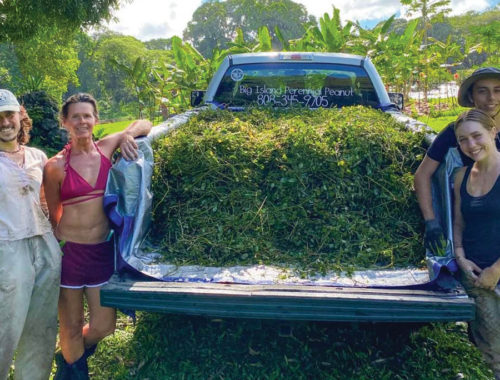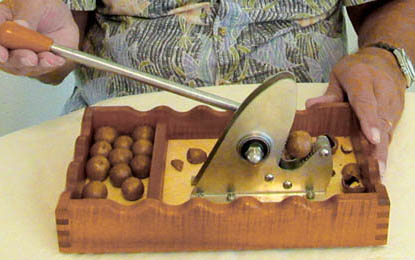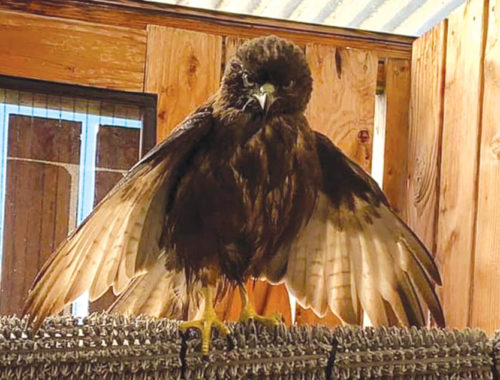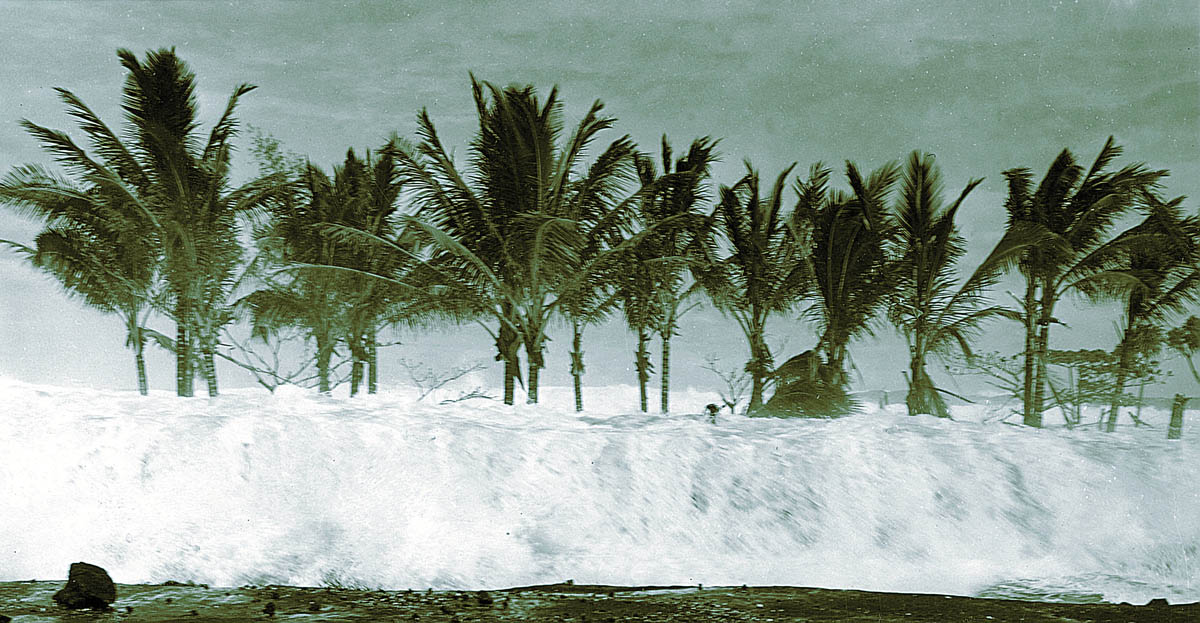
Tsunamis: Hawai‘i’s Most Dangerous Natural Hazard
By Walter Dudley
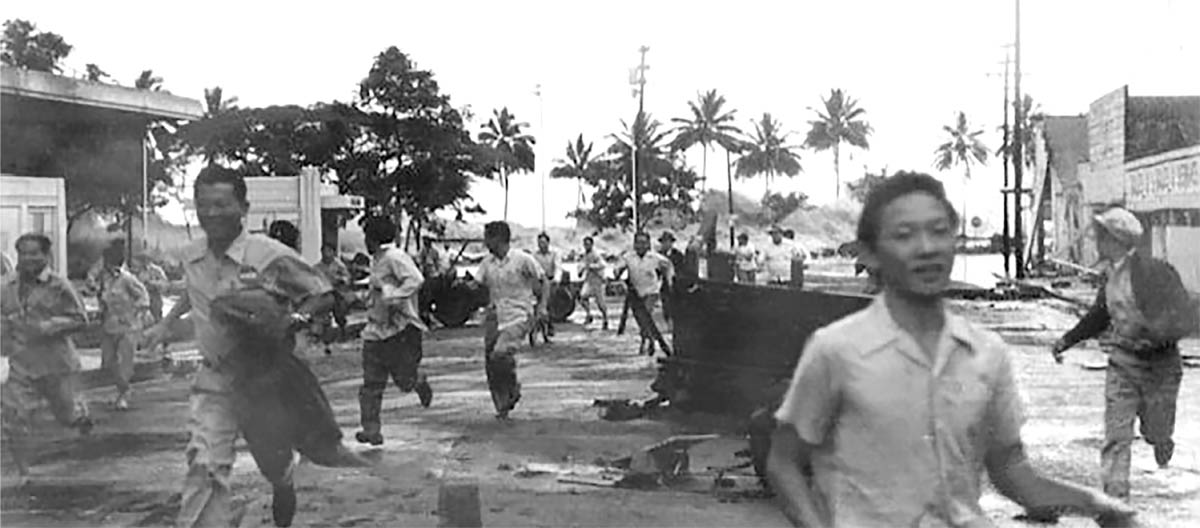
Just before 7am on the morning of April 1, 1946, Seaman Perry Minton was in the radio room aboard the USS Thompson headed toward Pearl Harbor when, he recalls, “Almost as soon as I put on the headset, I heard a patrol plane calling its base at Kāne‘ohe to report something on the surface of the sea, perhaps just a line or small wave. When the station at Kāne‘ohe asked the pilot to drop down closer to the surface to see what it was, the pilot said it had outrun his aircraft!” Minton wondered what was going on; however, his friends aboard the Thompson assured him that it was just an April Fools’ joke—but it was no joke.
Herbert Nishimoto, a sophomore at Laupāhoehoe School, had spent the weekend hanging out with some buddies in an empty cottage on the little peninsula when he was awakened by a friend shouting, “Tidal wave!” He watched in awe as the second wave destroyed an old canoe shed and then the third wave came, and Herbert remembered, “It looked terrifyingly huge.” At that point, Herbert was swept off his feet and sucked into the sea. When the wave finally subsided, he found himself floating amongst debris and accompanied by sharks! Being clever, industrious, and lucky, Herbert tells his story, “I found a mattress and some logs and I made a raft.” After a while he saw two fellow students and managed to pull them aboard. He saw a bottle of Crisco floating by and grabbed it so that they could rub it all over their bodies to protect them from the sun, the cool wind, and water as they began drifting along the shore, north of Laupāhoehoe.
Meanwhile, the tsunami waves had continued on their path of destruction, crashing ashore in Hilo and along the shores of Keaukaha, where six-year-old Jeanne and her younger brother David had spent the night with their grandparents Charles and Elizabeth Mason, and their uncle Rod. Jeanne had gotten up to get ready for school, when she looked out the kitchen window and saw water in the yard up to the clothes line. Uncle Rod quickly grabbed Jeanne, carrying her and David through the water to higher ground where they met neighbors who took charge of the kids while Rod went back to check on his parents. Rod took his mother to a nearby house high atop a rocky mound, but his father refused to leave. A retired sea captain, and a stubborn man, Charles Mason remained determined to stay with his home, as if it had been his ship. Rod took the amazing photo pictured above of the third wave as it roared through the park across the street and then lifted the Mason house and washed it inland. As the house floated away with Charles onboard, Rod turned to his mother and said, “Looks like Admiral Mason’s finally gone back to sea.” His mother was not amused.
That afternoon, after the tsunami waves had stopped, Jeanne and David returned to their grandparents’ home to find everyone safe. The Mason house had been lifted from its foundations, but then deposited in their backyard with “Admiral Mason” aboard. When the kids approached the house, Charlie said, “I knew you’d be back when you got hungry.” The Masons, Jeanne, and David had all been very lucky.

But what about Herbert and his two classmates?
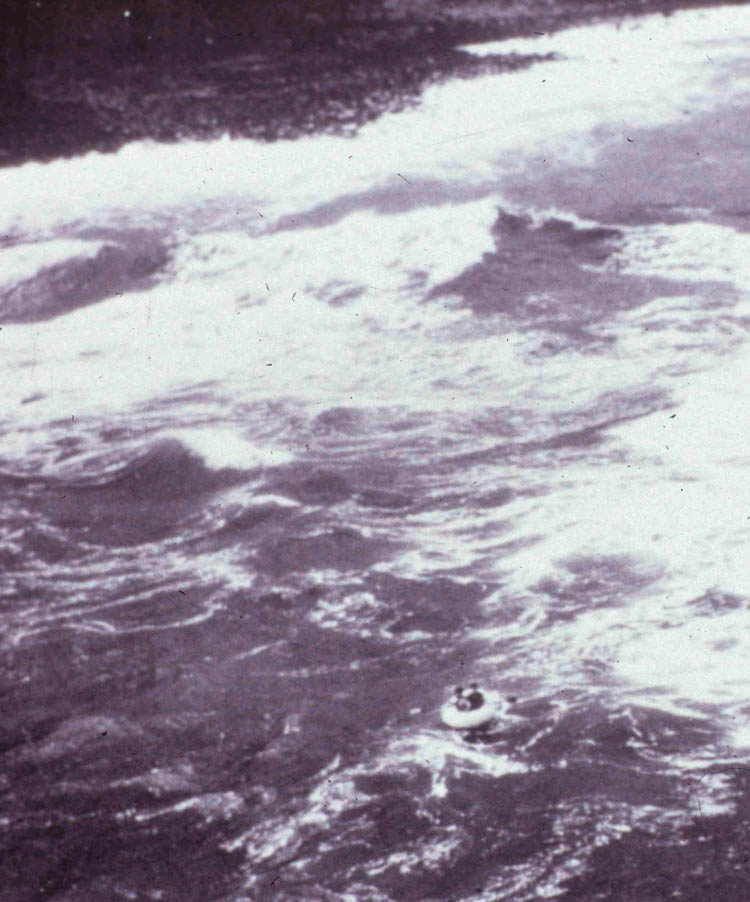
As Herbert and his fellow students continued to drift offshore, they heard an airplane flying overhead and saw it drop an inflatable raft. They paddled toward the raft, climbed in, and quickly rowed offshore away from the debris, fearing the nails or splinters in the wood might puncture their little rubber boat. They were now safely in a life raft, but rapidly drifting north along the coast of steep, jagged cliffs. As night fell, they saw lights above the cliffs and Herbert realized they were offshore of Honoka‘a, 20 miles north of Laupāhoehoe. They dozed off wondering where they might safely get to shore along the treacherous and largely uninhabited coast that lay ahead.
They awoke to find themselves drifting along the North Kohala coast heading into the notoriously dangerous ‘Alenuihāhā Channel; however, luck was with them. As it approached 11am, Herbert shares, “I saw a whole bunch of people running down to the shore. Two guys hit the water and start swimming out, and they took us on shore.” Herbert and his two classmates survived, thanks to his ingenuity and their luck, but 24 fellow students and teachers at Laupāhoehoe died that tragic day, along with 96 people in Hilo and another 38 across the islands.
Following the April 1, 1946 tsunami, the Pacific Tsunami Warning Center was established on O‘ahu and would begin sending out warning messages when tsunamis threatened the islands. The question was, would people listen?
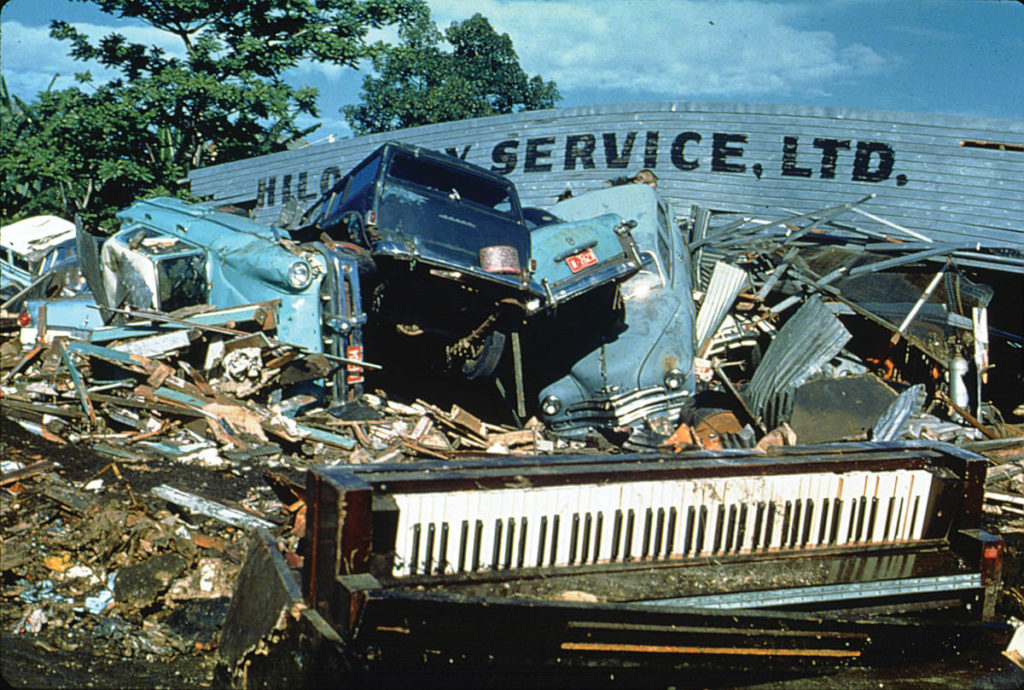
The 1960 Tsunami from Chile
After a few small tsunamis during the 1950s, on May 22, 1960, the largest earthquake ever recorded—a colossal 9.5—struck Chile. A tsunami warning was declared with waves predicted to arrive at Hilo around midnight. The people in Keaukaha, who had seen the destruction in 1946, evacuated immediately, but in Hilo many people either didn’t evacuate or even went down to watch the waves. Such was the case of 19-year-old Bernard Waltjen and his 16-year-old brother, Richard. They were watching television when breaking news reported the tsunami warning. Bernard recounts, “So we looked at each other and decided, let’s go down and take a look.” Their prudent sister immediately said, “Don’t go down there!” and they replied that they weren’t going down to the bay to watch, but were only going up the hill to their friend Eddie’s house. “So, we went up to Eddie’s house, and then turned around, turned off the car, rolled past her house, and then went down to Waiakea.” They estimated that there were 60 to 70 people standing around watching, when at 12:30am the second wave began to arrive and by 12:46am the second crest washed under the Wailoa River bridge at a level nine feet above normal.
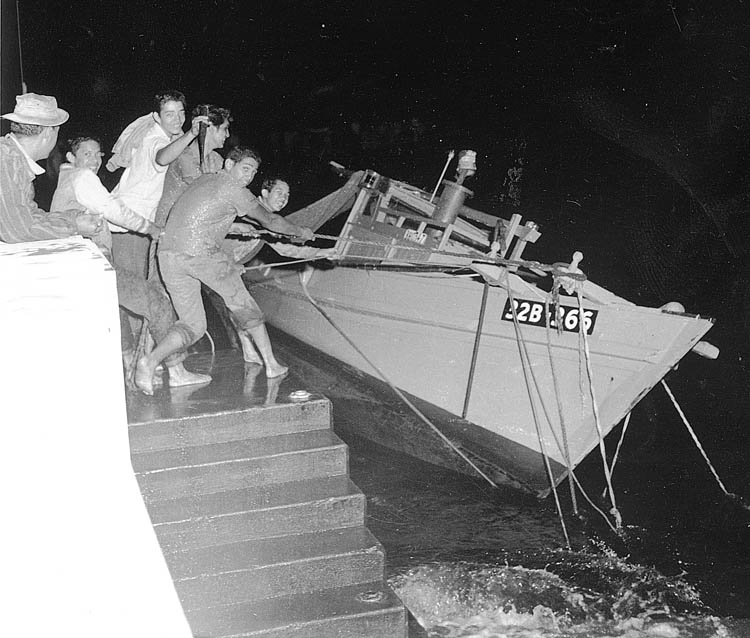
As the water began to withdraw after the second wave, just after 1:00am, the 20-foot-high front of the third wave roared into Hilo Bay. Bernard began running like his life depended on it, which it did. Richard climbed up an electric light post. Suddenly he felt the light post begin rocking back and forth, “So I jumped off the post to the roof of Café 100. I see this house in front of me and I stand up and I grab this windowsill, and I start to spin around with this building, and I’m hanging on…the water seemed to be calming down. And then I see something floating by, so I swim to it, and it was a canoe, and I hung on and it took me in. Then I felt ground and I stood up and started walking towards blue lights, the cops.”
Bernard continued walking toward the lights, now searching for his brother, Richard. Bernard exclaimed, “And then we see each other.” Richardʻs first words were, “Oh! My god, we thought you were gone! Wait ‘til your sister hears about this, she’s going to kill you!” Throughout the other Hawaiian Islands, the 1960 Chilean tsunami caused only moderate damage and no lives were lost. In Hilo, it killed 61 people.
Three Pacific-wide tsunamis have struck Hawai‘i since 1960. In 2009, tsunami waves higher than 70 feet crashed ashore in Samoa and American Samoa, killing 192 people. In 2011, a tsunami from the Fukushima earthquake caused massive destruction and killed more than 20,000 people in Japan. In January 2022, Tonga was rocked by a volcanic explosion that created a tsunami, killing people as far away as Peru. Thankfully none of these took people’s lives in Hawai‘i, or caused much local damage, however every year, the risk of injury from another deadly tsunami grows.
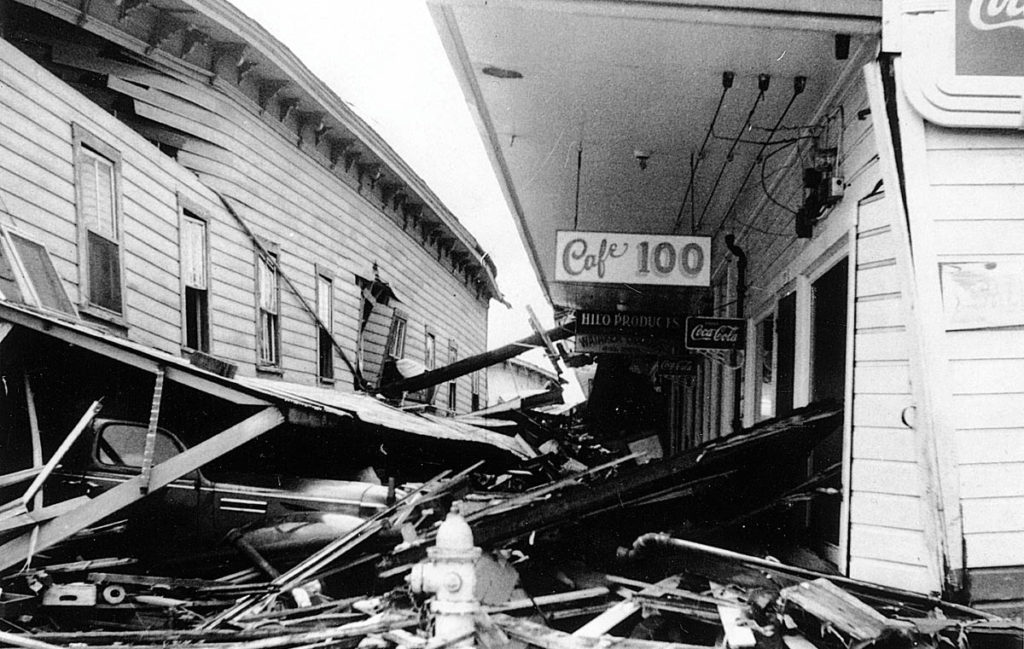
It’s not IF, but WHEN another tsunami will strike!
Hawai‘i is not only struck by tsunamis from all around the Pacific rim, but we create our own “local tsunamis” right here in the islands. In 1975 a 7.2 magnitude earthquake struck Kalapana, creating a tsunami with waves as high as 26 feet at Halape, where two people were killed. It’s been more than 45 years since that tragic event and more than 60 years since the last deadly Pacific-wide tsunami struck the islands. That only makes things worse! Many people forget about the danger of tsunamis and new residents from out-of-state may not even know about tsunamis. On the positive side, there have been many improvements in the Tsunami Warning System. There is no such thing as a “false alarm.” If the sirens sound (unless itʻs the first Monday of the month at 11:45am when the sirens are tested), head to high ground!
The only problem is, with local tsunamis, there may not be time for the Tsunami Warning Center to get the message out to local communities, especially here on Hawai‘i Island. The 1975 tsunami struck Hilo less than 15 minutes after the earthquake. An ancient tsunami off South Kona, caused by a massive landslide, struck Kailua-Kona less than five minutes later! How can we prepare and react to local tsunamis? Know nature’s warning signs:
- Rapidly receding water
- Rapidly surging water
- A strange sound coming from the ocean
If you hear or see any of these, head inland to high ground.
The survivor stories related above were all collected by Hiloʼs Pacific Tsunami Museum to promote tsunami preparedness and help save lives. To learn more about tsunamis, their history and impact in Hawai‘i and around the world, visit the museum. Don’t be scared, be prepared! ❖
For more information: http://tsunami.org/

